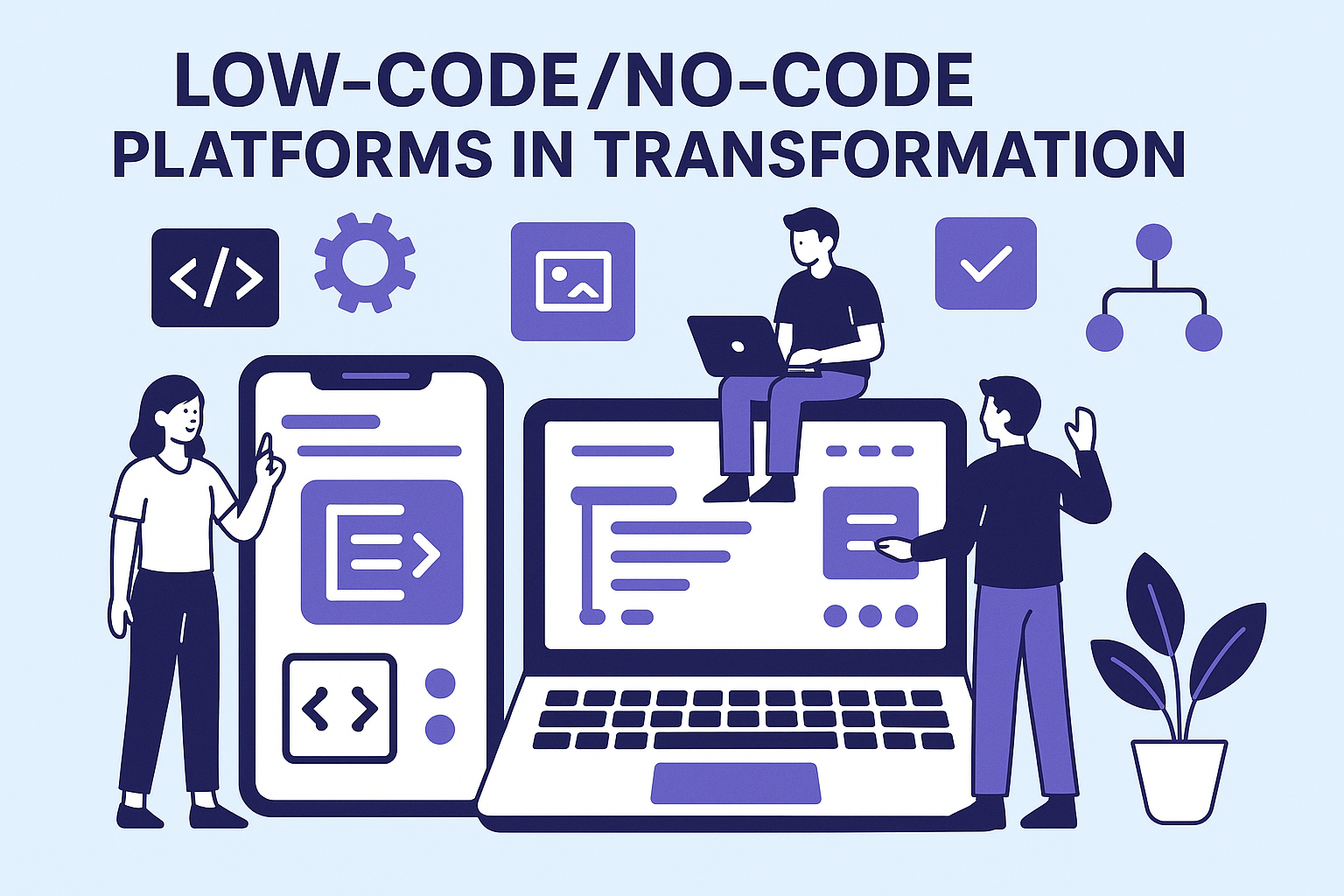Accelerating Innovation Without Writing a Line of Code? Almost.
What Are Low-code/No-Code Platforms?
Low-code and no-code platforms empower business users and developers to build applications using visual interfaces and drag-and-drop logic, reducing the need for traditional coding.
Low-Code = Minimal coding for complex apps
No-Code = Pure visual development, often for simpler use cases
Why They Matter in Digital Transformation
Speed to Market: Build and iterate apps in weeks—not months
Business-IT Collaboration: Business teams can co-create, reducing IT backlog
Cost-Efficient Scaling: Fewer resources needed for deployment and support
Agile Iteration: Continuous updates are faster with visual logic and pre-built components
Where They Fit Best
Internal Tools & Dashboards Customer Portals
Workflow Automation Legacy System Extensions Prototypes & MVPs
These platforms are especially effective for process digitization, data capture, and UI-heavy front ends.
Business Benefits
| Benefit | Impact |
| Democratized Innovation | Anyone can build—reducing dependency on developers |
| Shorter Dev Cycles | Rapid prototyping and deployment |
| Integrated Systems | Pre-built connectors for CRM, ERP, databases |
| Reduced Technical Debt | Clean, manageable modules that scale with use |
Challenges to Watch
Shadow IT Risk: Uncontrolled apps outside governance policies
Scalability Limits: Complex logic or custom APIs may hit roadblocks
Security & Compliance: Role-based access and data privacy need scrutiny
Tool Sprawl: Too many platforms = fragmented systems and training gaps
Conclusion
Low-code and no-code platforms redefine how digital solutions are delivered—faster, cheaper, and more inclusive. While not a silver bullet for every use case, they’re a cornerstone of transformation strategies that prioritize speed, agility, and empowerment across the enterprise.





